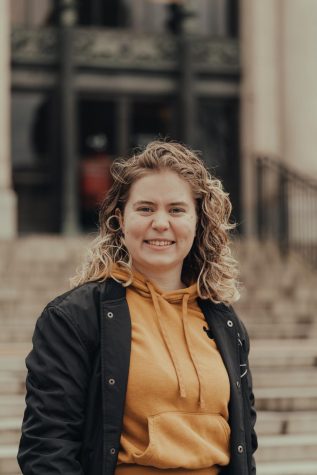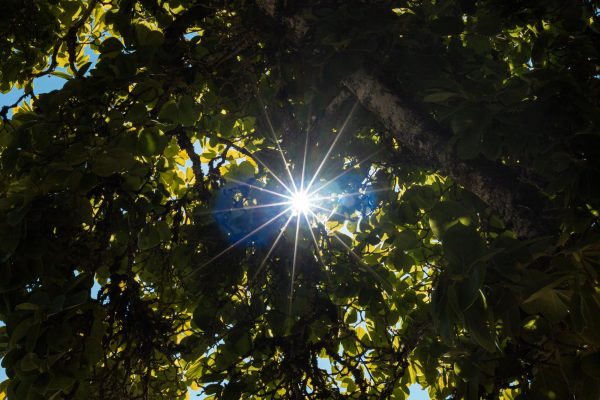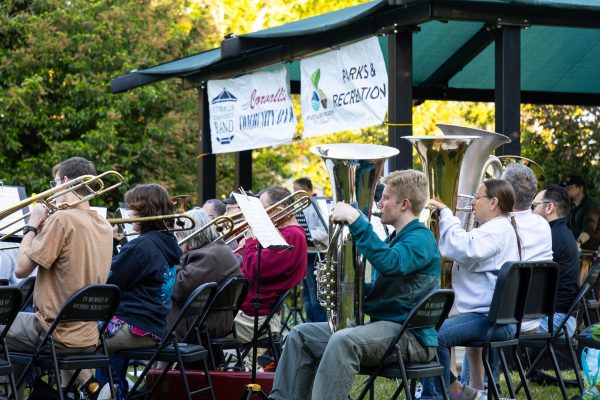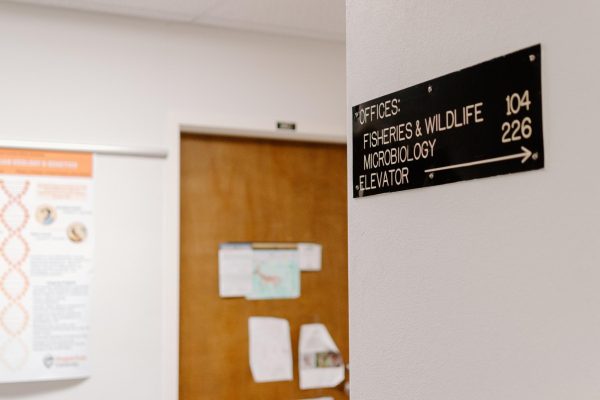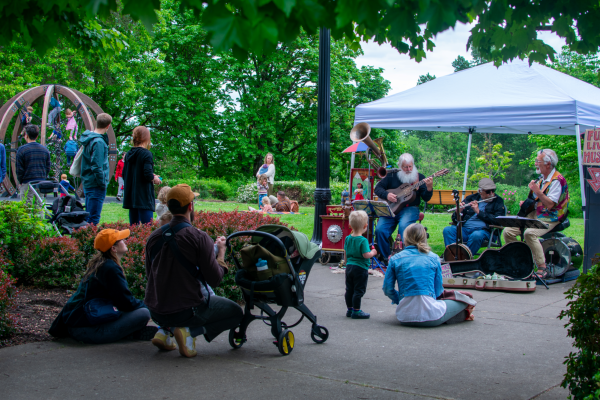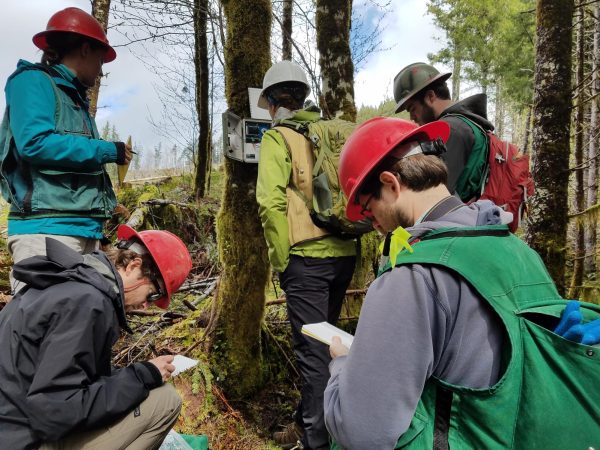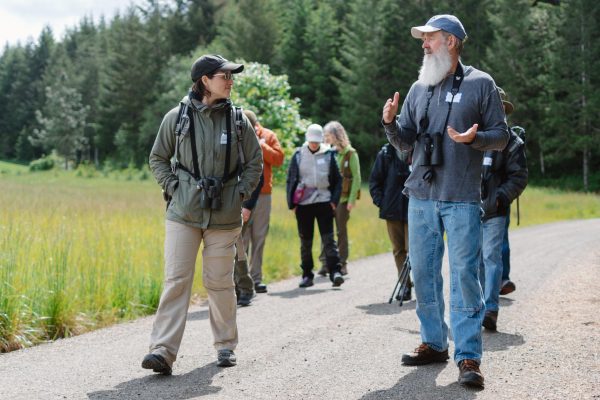Roundabouts proposed for southern Corvallis to increase safety
August 21, 2021
The City of Corvallis and the Oregon Department of Transportation are looking at potentially building roundabouts on Highway 99 in southern Corvallis to slow traffic and decrease risk of severe accidents.
Highway 99, also known as Southwest Third Street in Corvallis, Ore., is a main north-south U.S. highway that runs through the middle of the city and has historically caused many problems for southern Corvallis.
According to Corvallis City Manager Mark Shepard, southern Corvallis is the only residential area in the city with a state highway going through it, which can cause some challenges.
“One of those challenges is creating a sense of neighborhood,” Shepard said. “That you’re in the city [and] you’re not just buzzing down the highway. Especially if you’re coming from the south—north into Corvallis—you’re used to clipping along at 55 miles per hour, and then all of a sudden, you’re here in the city.”
Currently, the speed for most of Highway 99 through southern Corvallis sits at 30 mph, and driving above this speed limit can create dangerous conditions not only for other cars on the road, but for pedestrians and bikers as well.
Thus, while the idea is still in the planning phase and may not happen, roundabouts for southern Corvallis have been proposed as a possible solution to this problem.
“The idea with the roundabouts are, obviously, they’re a traffic control measure at intersections, but they do kind of provide maybe a gateway and an acknowledgement that you’re entering the city [and] you’re entering a neighborhood,” Shepard said.
Other options to improve Highway 99 in southern Corvallis include ideas such as protected intersections or medians down the highway, but roundabouts offer certain benefits that these other ideas may not, such as safety and reduced speed.
“Roundabouts have a very strong record of improving safety at intersections,” said James Feldmann, the senior transportation planner for the Lincoln, Benton and Linn County area of Region 2 in ODOT. “There’s a lot of data to support that after roundabouts go in, the frequency and severity of crashes go down dramatically.”
According to Feldmann, traditional intersections with stop lights can have as many as 20 conflict points where people can crash into each other. In roundabouts, however, there are far fewer conflict points, and accidents are less severe because it’s more difficult to speed through a roundabout than it is to speed through a traditional intersection.
For these reasons, Feldmann said roundabouts are proven to be safe and effective at reducing both severe and fatal crashes.
There are also some secondary potential benefits of roundabouts that Feldmann said includes safer crossing for pedestrians due to shorter crossing distance and a median in the middle to act as refuge and more chances to do U-turns if there are multiple roundabouts.
“And then the other less obvious benefits of roundabouts are that, because there’s a more continuous free flow of traffic, there’s the potential to reduce the number of lanes whereas a traditional signal may not,” Feldmann said. “It’s always context-dependent and not in every case, but you may have the opportunity to have a three-lane cross section instead of a five-lane cross section because of a roundabout.”
Due to these roundabouts still being in the developmental and planning stage, Feldmann doesn’t know if this decrease in cross sections would happen in any area specifically; rather, it’s just another potential benefit that roundabouts in general give.
“So roundabout safety and more continuous flow of traffic, and that continuous flow of traffic means that you can do some lane reconfiguration potentially, and if you have multiple roundabouts, you can potentially do medians where you may not otherwise,” Feldmann said.
With the roundabouts still being in the planning stage, there is no official consensus yet on where the roundabouts will be built in southern Corvallis, but there are some early ideas about their possible locations.
“The idea is to have one kind of at the south end of town, the south end of south Corvallis, and then just before you’re heading into downtown just across Marys River,” Shepard said. “Again, that kind of gives you the book ends of ‘Here’s south Corvallis neighborhood,’ and certainly on the south end as people are coming north, it slows them down and gives them the visual queue that they’re entering something different here.”
Hyatt Lytle, the Corvallis City Council president and city councilor for Ward 3, said she’d always liked the idea of having a circle at Rivergreen Avenue on the south end and Crystal Lake Drive on the north end as gateways leading into southern Corvallis.
However, according to Lytle, an idea was then proposed to instead move the possible north end roundabout up to the interchange instead.
“I fell in love with this,” Lytle said. “You put a roundabout there so instead of everyone, when they come into south Corvallis, everyone speeds up… you’d have everyone slowing down, you’d have everyone coming off the highway slowing down, [and] you’d have going out slowing down.”
However, some community members have raised potential concerns about these roundabouts as well.
“There was the bike and pedestrian ODOT guy for Oregon, and he has concerns about how roundabouts are intimidating for bikers,” Lytle said. “So it’s important to have a signalized crossing, preferably a hawk signal—the ones that run red—near a roundabout, so there’s access for crossing if bikes are intimidated.”
If these roundabouts do clear the planning stage, there is no projected date yet of when they may come to southern Corvallis.
“We’re working toward two concepts, and from there we’re going to pick a preferred concept and take that through to the end,” Feldmann said. “I do expect roundabouts to be in the preferred concepts, but I don’t know how many or where they’ll be until we get further through this public involvement process and more analysis by our engineers.”
Community members who are interested in the project are encouraged to make their voices heard. There will be a tabling event about the project on Aug. 25 and a virtual open house the week of Aug. 20-30. More information, including the location and times of the tabling events and the link for the open house, can be found on the project web page.
“The effort ODOT’s going through right now is really a planning effort,” Shepard said. “It’s not a go-and-build-things effort… But once they have this planning effort complete—since we have that plan—as funding becomes available through the state, we have the opportunity for ODOT to actually start building projects and making these improvements. So, it’s a very important first step to get this planning done.”













































































































